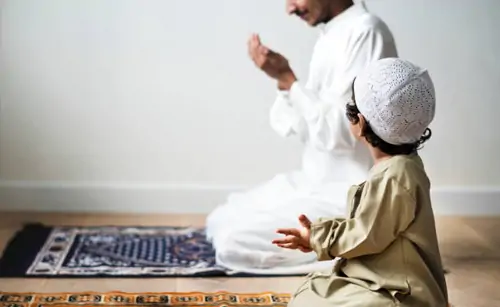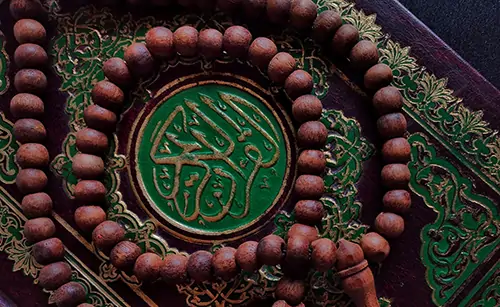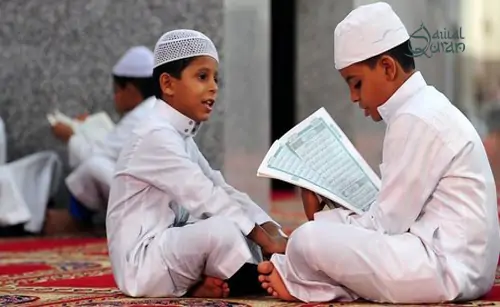How to Perform Hajj? Understanding The Concept of Hajj and Step-by-Step Guide with Complete Rules

Islam is the second-largest religion worldwide, and almost 1.9 billion people are known to follow Islam. This beautiful religion has 5 pillars, including Kalima, Namaz, Fast, Zakat, and Hajj. As the Hajj days are to arrive, and everyone is preparing for the holy pilgrimage, they have the same query: “How to perform Hajj?” This blog post aims to answer this question in the form of a complete guide. Not only this, it will also help you learn about the concept and types of Hajj. So, let us start with the concept of Hajj!
What is Hajj?

For physically fit and financially stable Muslims, the Hajj is an obligatory ritual that must be performed at least once in a lifetime. Travelers, or Haajji, set off for Makkah, the holiest city in Islam, where they lay aside their worries and concentrate on Allah and His worship. They seek forgiveness, renewal, and unity with other Muslims via rituals like Tawwaf of the Kaaba and remembering the sufferings of Prophet Ibraheem. After completing the physically and spiritually taxing journey, pilgrims return home changed.
Types of Hajj

Most people know Hajj and are not familiar with its types. If you also fall on their list before you set off on a pilgrimage, knowing them is essential. Remember, there are 3 types of Hajj pilgrims can choose from:
Hajj al-Tamattu':
The Prophet Muhammad (peace be upon him) favored this kind, which is the most prevalent. Between the eighth and thirteenth day of Dhu al-Hijjah, pilgrims in Tamattu' complete the prescribed Hajj steps after performing Umrah rites during the Hajj season.
Hajj al-Ifrad:
This is a more direct method when travelers omit Umrah and only complete the Hajj ceremonies. They only put on ihram during the Hajj and stay there till it is finished.
Hajj al-Qiran:
This kind is the least prevalent. Here, pilgrims do the Hajj and Umrah procedures whil e always dressing in ihram from the start. To finish the rites, they must also sacrifice an animal, a Hadi.
Steps to Perform Hajj
Every physically capable Muslim who has the means must perform Hajj or the journey to Mecca, which is considered the foundation of Islam. This challenging journey tests your body and spirit, but it also gives you a chance to forget about everyday problems and focus on getting closer to Allah Almighty. The steps to undertake the hajj are broken down into depth here:
Preparation and Intention (Niyyah):
Pilgrims secure their belongings and bodily well-being before setting forth. For the physically demanding ceremonies, good health is essential. Financially speaking, you need to be able to support yourself and any surviving dependents. Your sincere desire to undertake the Hajj only for Allah is the most crucial requirement, and make it when entering the Ihram.
Entering Ihram
An ihram denotes a virtuous and devoted condition. Men often wear two white sheets, with subtle changes according to their marital status, and other plain, unstitched clothing. Women dress in Abaya and Hijab garments that cover every part of their bodies, save for their hands and faces. During Ihram, several limitations apply. Pilgrims refrain from fighting, using foul language, injuring animals, wearing specific articles of clothing with decorations, and applying perfumes.
What is Tawaf and Sa'i (Umrah)
Many people decide to make the shorter Umrah pilgrimage after arriving in Mecca. Either before or after the Hajj, this can be completed. Umrah includes Tawaf, a seven-counterclockwise circumambulation of the Kaaba, the holiest place in Islam. As they circle, pilgrims offer prayers and show respect for God. Sa'i goes after Tawaf. To commemorate the urgent search for water that Bibi Hajra, the wife of Prophet Ibraheem, made for her son Hazrat Ismail, pilgrims travel between the hills of Safa and Marwa seven times.
What is Day of Arafah (Yawm Arafah)
Hajj's most important day is the ninth of Dhu al-Hijjah. The plains of Arafah, which are around 20 kilometers east of Mecca, are where pilgrims devote the whole day. They pray, plead, and ask for forgiveness a lot today. Pilgrims are reminded of the Day of Judgment and the value of virtue during a powerful sermon in the afternoon. In addition, the main component of Hajj is standing in prayer (waqf) on the Arafah plains. It is said that sincere apologies and prayers offered here have the highest chance of being heard by God.
What is Muzdalifah and Rami
After the Day of Arafah, as the sun goes down, pilgrims travel to Muzdalifah, a valley between Arafah and Mina. They pray there overnight and collect some small stones for a ritual coming up next.
The next day, they move to Mina, a big area with tents set up near Mecca. Here, they perform Rami, which means throwing stones. They throw seven stones at each pillar, representing the temptations faced by Prophet Abraham in the past.
Eid al-Adha and Sacrifice (Qurbani)
The joyful event of Eid al-Adha, the Festival of Sacrifice, falls on the 10th of Dhu al-Hijjah. Whether it's a sheep, goat, cow, or camel, pilgrims honor Prophet Ibraheem’s willingness to sacrifice his son Hazrat Ismail as directed by God. To promote empathy and communal well-being, the sacrificed meat is distributed to the impoverished and disadvantaged. Some pilgrims could contribute to a communal sacrifice offered in their name.
Shaving/Haircut and Tawaf al-Ifadah
Pilgrims come to Mecca after Ramadan on Eid al-Adha to cut their hair or shave their heads, depending on gender. This denotes the conclusion of a significant rite and the return to normalcy. After that, they go around the Kaaba seven times more in Tawaf al-Ifadah. After the Day of Arafah, they are finally returning to Mecca.
Staying in Mina, Rami, and Farewell Tawaf
For three days, pilgrims stay in Mina and perform Rami three times a day at the Jamarat. Pilgrims do their last Tawaf al-Wida, or circumambulation, of the Kaaba before leaving Mecca. The Hajj ceremonies officially finish with this.
Performing the Main Rites of Hajj (Hajj 2025 Day by Day)
What to Do on the 8th of Zul Hijjah : Departure for Mina
- Early morning departure from Mecca to Mina camp (Mina Saudi Arabia Hajj).
- Distance: ~5 km east of the Kaʿbah—walk or ride a shuttle.
- Overnight stay praying the five daily prayers in congregation.
9 Zul Hijjah: Day of Arafah
- After Fajr, leave Mina for Arafah (~20 km).
- On the plain of Arafah, perform Wuḳūf (standing).
- Dua of the path to Arafat: “O Allah, guide me, grant me safety…”
- Supplications of Arafah Sharif: The best hour is after Ẓuhr until sunset—pray, repent, and recite the Khutbah of Arafah (Hajj Khutbah 2025 time).
- Evening: travel to Muzdalifah Hajj. Collect pebbles for Jamarat.
10 Zul Hijjah: Eid al-Adha & First Rites
- Sacrifice of perform hajj: Offer an animal (sheep, goat, cow).
- Halq/Taqsir: Complete head shaving or trimming.
- Return to Mina before Zuhr for the first Rami al-Jamarat (stoning the small pillar).
- Definition of Rami: Throwing seven stones at the Jamarat as a symbol of rejecting evil.
11–12 Zul Hijjah: Final Stoning & Farewell Tawaf
- Rami of 11th & 12th: Pilgrims perform three sets of Jamarat stoning (jamarat stoning) each day.
- After each day’s Rami, return to Mecca for Tawaf al-Ziyarah (Visitation Tawaf).
- Tawaf al-Rukhsah: If staying in Mina for 13 Zul Hijjah is not feasible, perform this shorter Tawaf.
13 Zul Hijjah (Optional): Final Rami & Departure
- Pilgrims who extended stay perform the third stoning of the largest Jamarah.
- Depart back to Mecca, concluding the 10 days Hajj rites.
When do you say "Hajj Mubarak"? On which date or occasion do Muslims say "Hajj Mubarak"?
You typically say "Hajj Mubarak" after a person has completed the rituals of Hajj and is either:
- Returning home from Hajj, or
- Has already returned, and you’re welcoming or congratulating them.
Ideal Time to Say "Hajj Mubarak":
- After the 13th of Dhul Hijjah, because the main rituals of Hajj are completed by then.
- Especially once the Haji arrives home, it’s a common cultural and respectful practice to greet them with “Hajj Mubarak.”
Not Usually Said:
- On the Day of Arafah (9th Dhul Hijjah) or Eid al-Adha (10th Dhul Hijjah) to general people — instead, you say “Eid Mubarak”.
- "Hajj Mubarak" is specifically for those who performed Hajj.
Conclusion
For Muslims, the Hajj 2025 is a transformative journey that provides a chance for healing and regeneration. Thanks to this guide, you now have all the knowledge required to perform Hajj, from understanding its classifications to navigating each phase. Recall that it is imperative to obtain personalized guidance from an experienced Islamic scholar before embarking on this sacred expedition. May Allah accept your Hajj and guide you into His presence.
FAQ's
Can we recite the Holy Quran during the Hajj?
Every good deed is allowed to be committed during the Hajj. Likewise, Quran recitation is much more important than reciting it at home.
When does Perform Hajj start in 2025 and Hajj end in 2025?
In 2025, The Hajj pilgrimage is held annually between the 8th and 13th days of Zil-Hajj, the 12th and final month on the Islamic lunar calendar.
What is required to go to Hajj?
You'll need a passport that is currently valid and has at least six months remaining after you want to depart Saudi Arabia. a Hajj visa, or if you're a Saudi Arabian citizen, a Hajj permission.
What Happens on 8 Zul Hijjah During Hajj?
On 8th Zul Hijjah, pilgrims enter or renew their Ihram and travel to Mina, where they perform prayers and spend the night in preparation for the Day of Arafah.
What Should Muslims Do on 8th Dhul Hijjah?
Muslims should reflect, make du’a, fast if not performing Hajj, and remember Allah, as it is one of the blessed days of Dhul Hijjah.
How do you qualify for the Hajj?
First of all, Hajj is only necessary for mature Muslims, male or female. It follows that although minors are welcome to perform the Hajj, it is not mandatory. Second, Muslims who are physically unable to make the journey do not qualify, as are the severely sick, old, or frail Muslims.
Can women do Hajj, and what are the clothing rules?
Yes, women can perform Hajj. They must avoid revealing clothes, wear two-piece outfits (long dress & headscarf), and no face-cover or gloves.
What is the meaning of Rami and why throw stones?
Rami symbolizes Ibrahim’s rejection of Satan. Each pilgrim throws seven pebbles at three Jamarat pillars—small, medium, and large.
What is the difference between Hajj and Umrah?
Hajj and Umrah are pilgrimages to Mecca, but Hajj is more prolonged and mandatory for able Muslims once in their lifetime. Umrah is shorter, can be done anytime, and is not obligatory. Both involve circling the Kaaba and seeking forgiveness, but Hajj has additional rituals like standing on the plains of Arafah.















